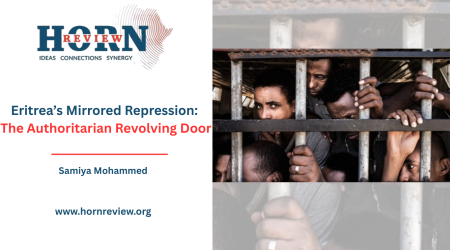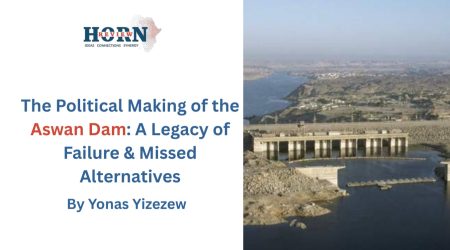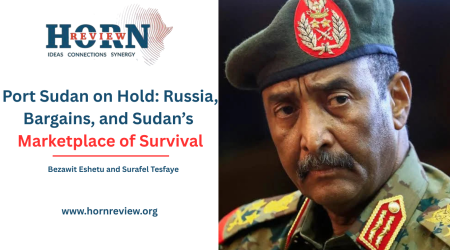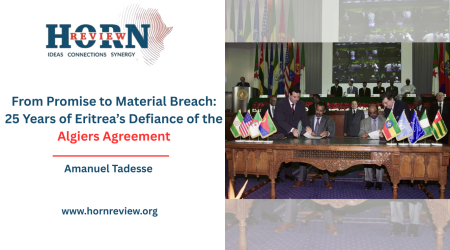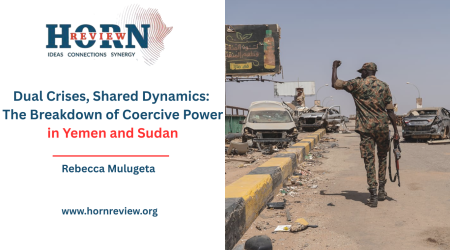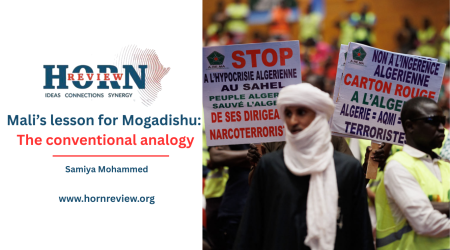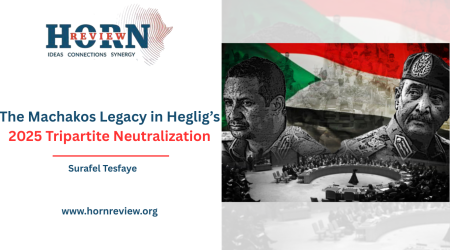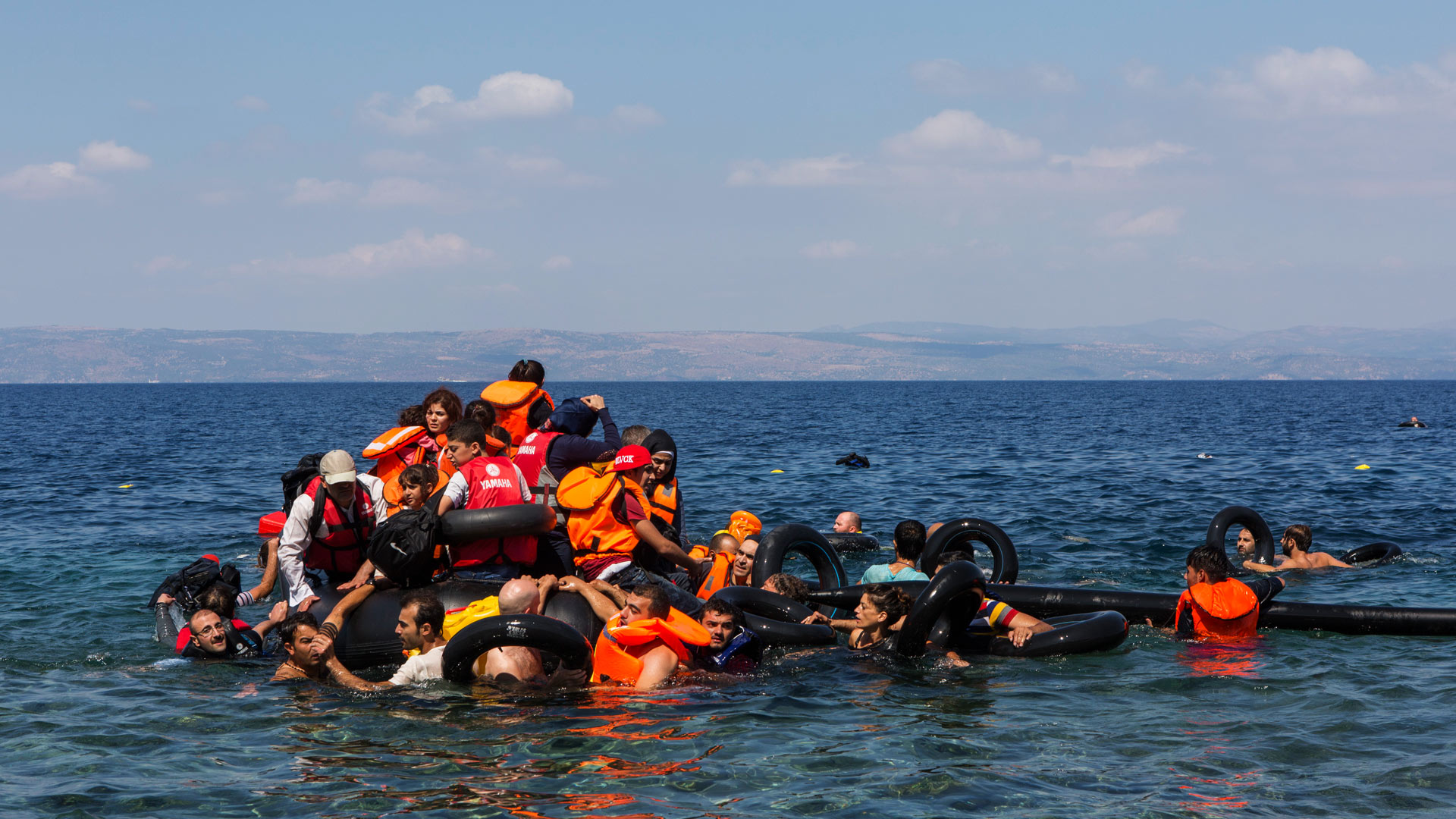
30
Jul
The Border Is a Mirage: Why Europe’s Migration Crisis Begins in the Horn of Africa
The Mediterranean crossing from Libya to Europe is one of the world’s deadliest migration routes. Each year, it claims countless lives, mostly young men and women, as desperate people risk everything for safety or a better future. Libya has become a critical transit hub for migrants, particularly from sub-Saharan African countries like Sudan and the Horn of Africa nations (Eritrea, Somalia, Ethiopia), where war, conflict, and economic hardships drive people to flee, a violent bottleneck where desperation meets policy failure.
This area is where bodies of Sudanese, Eritreans, Somalis, Ethiopians, and other sub-Saharan migrants wash up on Europe’s southern shores with grim regularity. News headlines frame it as another “migrant tragedy.” Politicians call for more border patrols and tougher measures, and blame smugglers. But beneath this recurring theatre lies a brutal truth Europe refuses to acknowledge: It started in the collapsed streets of Khartoum, in the prison camps of Eritrea, in the lawless deserts of Libya, and in the shadow wars of the Horn of Africa. And Europe, despite its wealth, institutions, and rhetoric, has largely chosen to treat the symptoms rather than confront the disease.
Fortress Europe Fights the Wrong War
Europe is fighting migration at its endpoint: the sea. But the chain of displacement begins much further inland in the failed peace agreements of Sudan, the brutal surveillance state of Eritrea, and the fragmented chaos of Libya. For years, the EU migration strategy has been designed like a fortress: push the borders outward, militarize transit zones, and pay others to block the flow. The idea is to stop the boats. But by the time a boat reaches the Mediterranean, the story has already been written in blood and ash.
The migration crisis is not a natural disaster; it is a political one. And the European Union’s focus on border patrols, naval missions, and criminal networks ignores the geopolitical vacuum that drives migration in the first place. Without engaging in the Horn of Africa’s collapse or Libya’s fragmentation, Europe’s strategy is like treating cancer with a bandage.
Libya: From Transit State to Weaponized Territory
Libya today is no longer just a transit state. It has become a weaponized buffer zone, a collapsed state whose factions use migrants as leverage, where migration has been commodified and migrants have become bargaining chips. Militants realized that controlling human movement is more profitable than oil or arms. More than a decade after NATO’s 2011 intervention and the fall of Muammar Gaddafi, Libya remains fractured between rival governments in Tripoli and Benghazi, with militias and tribal networks filling the void.
Rather than rebuild Libya’s institutions, Europe chose a transactional path, choosing to respond to the chaos not with diplomacy or reconstruction but with cash. In exchange for containing migration, EU funds flowed to Libya’s coast guard and affiliated militias. According to the EU Emergency Trust Fund for Africa, more than €455 million has been spent since 2015, much of it going to groups with direct links to human rights abuses. These actors intercept boats, return migrants to detention centers, and “manage” the flows often through extortion, torture, and forced labor.
This policy, framed as external border management, has instead created an ecosystem of outsourced violence. As UN reports and Amnesty investigations have shown, Libya’s detention centers have become extortion rackets. Militias demand ransoms, engage in sexual violence, and use migrants as bargaining chips. When Libya wants to leverage, more boats are allowed to sail. When the EU pays more, the crackdown resumes, but often violently. In this way, Libya has become both a gatekeeper and a blackmailer.
The Horn of Africa: Europe’s Forgotten Fire
While Libya handles the traffic, the Horn of Africa supplies the fuel. In Sudan, a brutal civil war between the army and paramilitary Rapid Support Forces (RSF) has displaced over 8.6 million people since 2023. Cities like Khartoum, El Geneina, and Nyala have been reduced to rubble. Ethnic cleansing in Darfur is once again underway. The survivors flee north into Egypt or across the Sahara toward Libya.
Eritrea, meanwhile, remains one of the world’s most repressive states. Under the regime of Isaias Afwerki, indefinite military conscription, total surveillance, and systemic repression have created a silent exodus. Youth flee through Tigray or Sudan, often ending up in Libya. They are hunted by traffickers, extorted by militias, and sometimes handed over to smugglers in exchange for bribes. Many end up in Libya’s “death camps.”
These are not economic migrants chasing dreams; they are political refugees escaping annihilation. And yet, Europe has turned its back on the Horn of Africa, intervening only when the waves reach its shores.
Greece: Europe’s Shock Absorber
On Europe’s front line, Greece has become the continent’s shock absorber. No longer merely a receiving state, it now functions as a militarized buffer. Greek authorities have increasingly adopted hardline tactics: pushbacks at sea, violence at borders, prolonged detention, and criminalization of humanitarian rescue. In 2023, more than 13,000 people were illegally pushed back from Greek territory, according to Human Rights Watch.
On July 11, 2025, Athens passed a controversial emergency law temporarily suspending asylum applications for arrivals by sea from North Africa. The Greek government defends the law as a matter of national urgency, but it directly violates the principle of non-refoulement under international law, which prohibits returning individuals to countries where they may face torture or persecution.
Yes, Border control is a sovereign right. But sovereignty does not override human rights obligations. Asylum is not a privilege to be granted when convenient; it is a legal right under the 1951 Refugee Convention. Ofcorse there are legitimate exclusion clauses under international law (such as threats to national security or serious crimes), the majority of these migrants are civilians, not combatants. They’re not carrying guns, they’re running from them, so those civilian refugees are entitled to protection from the effects of hostilities.
The Signal, Not the Symptom
Europe’s core mistake is conceptual. It sees migration as a symptom of an emergency, a wave, a crisis when it is in fact a signal: a warning about state failure, regional collapse, and geopolitical neglect. Billions have been spent on high-tech fences, satellite surveillance, and dubious deals with authoritarian regimes. But there is no coherent long-term strategy for the Horn of Africa or Libya.
Migration does not begin when boats leave Libya. It begins when a boy in Kassala or a girl in El Geneina wakes up to find her school bombed, her father disappeared, and her only option a smuggler’s route. The EU’s failure to recognize this has turned its migration policy into a cycle of permanent reaction.
Sudan is collapsing, and Europe barely responds.
Eritrea remains a dictatorship, untouched by real pressure.
Libya is fractured, yet the EU keeps funding militias instead of rebuilding institutions.
Greece is cracking, and burden-sharing among EU member states remains a fantasy.
The Choices Europe Must Make
The Horn of Africa and Libya are not Europe’s backyard. They are Europe’s border. And without a political strategy that addresses the power vacuums and proxy wars fueling displacement, the EU will remain trapped in a game of whack-a-mole reacting to boats while ignoring the burning homes migrants fled from.
The question is no longer whether migrants will keep coming. They will. The question is whether Europe will continue to treat their arrival as an inconvenience or finally confront the deeper sources of instability. If it fails to act, Europe won’t just lose control of its borders. It will lose credibility, influence, and its moral compass.
The alternative is clear: invest in regional peace, stabilize war-torn zones, support governance in Libya and the Horn, and treat asylum as a legal right, not a political tool. Europe must stop reacting to migrants and start reacting to the power vacuums that push them to sea.
Europe’s Border Crisis Didn’t Start at Sea—It Began in the Horn and Burned in Libya
By Surafel Tesfaye, Researcher,Horn Review

